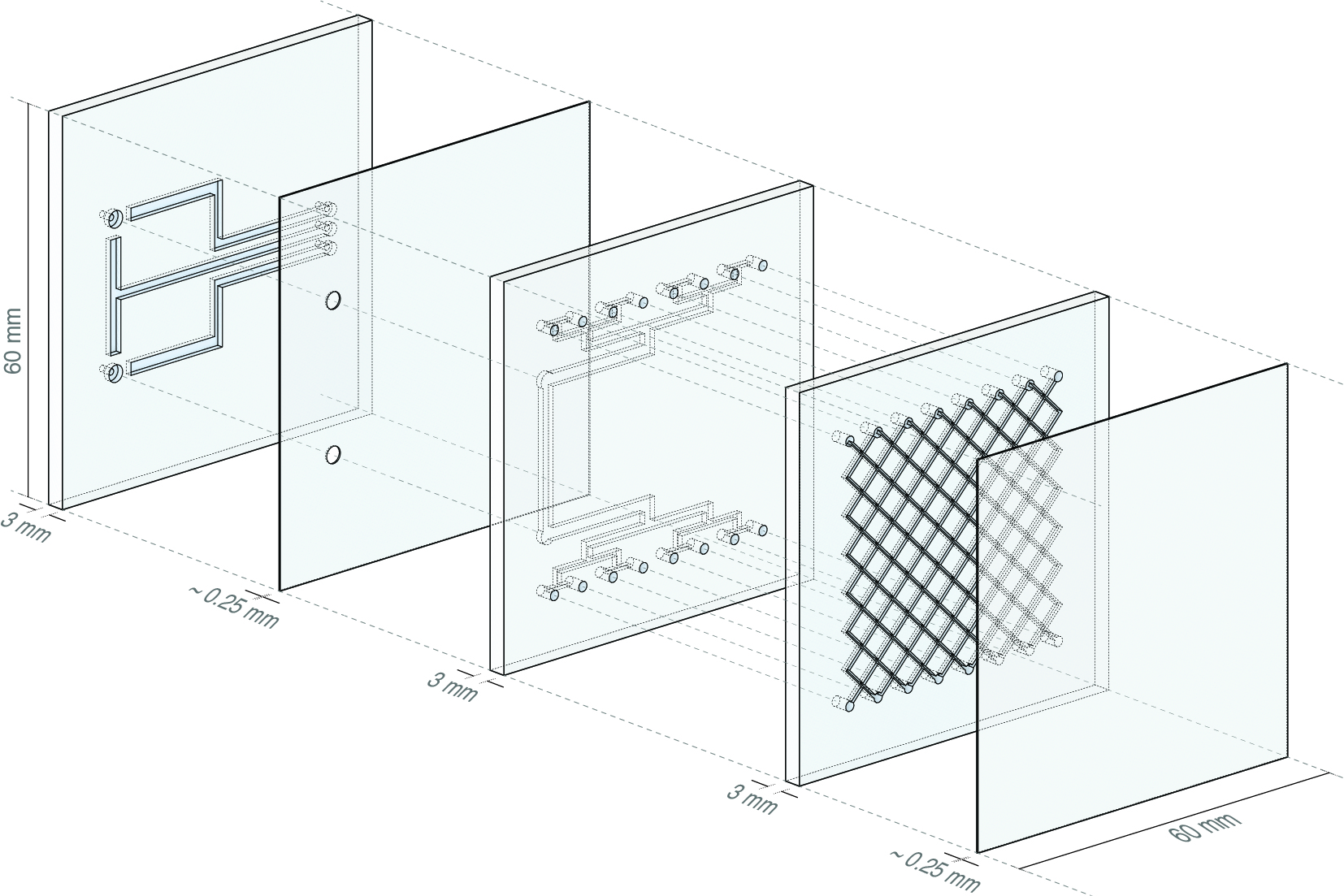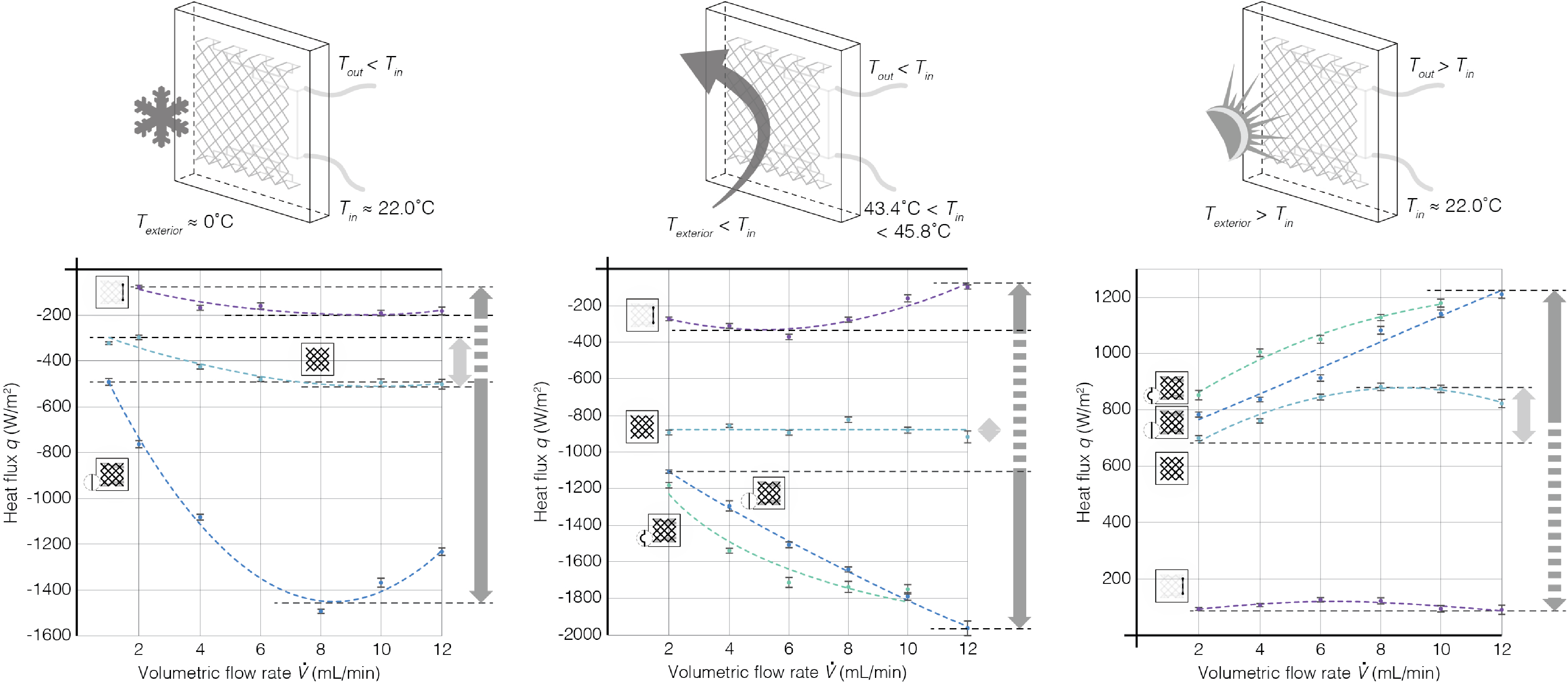VASCULAR FAÇADE SYSTEM
2022
Inspired by the ability of cutaneous vasculature of endothermic homeotherms to tune heat transfer to the
skin surface, this project introduces a novel PDMS-based vascular device that can modulate the path of
fluid flow through its channels and control channel expansion. The device consists of a large surface area
diamond network of millimeter-scale channels that are located in close proximity to the device's surface
and facilitate heat exchange, and a low surface area bypass deeper into the device for heat conservation.
Pneumatically actuated gates integrated into the device modulate path of fluid flow, and consequently, heat exchange with the environment.
The cutaneous cardiovascular system tunes heat transfer by contracting the precapillary sphincter
and reducing vasoconstrictor activity in the shunt vessel, directing blood flow through the shunt vessel
and conserving heat (left) or, alternatively, relaxing the precapillary sphincter and constricting the shunt vessel, directing
blood flow through the capillary network close to the skin surface and releasing more heat (right). These design principles were translated into the vascular device by combining a diamond network of small channels that facilitates heat transfer to/from the environment with a large diameter 'bypass' that inhibits heat exchange. Built-in gates mimic sphincter and vasoconstrictor activity, directing fluid either through the channel network or the bypass. A pressure increase in the superficial network of channels engenders channel expansion, which increases heat flux into or out of the device.
The device is a laminate of cast PDMS layers and thin PDMS films. The cast layers feature the gates and channels for air flow, as well as the channels for water flow. The thin PDMS films stretch upon an increase in pressure. This allows the gates to block flow of water and provides the opportunity to expand the superficial channels for increased heat exchange with the environment.
Infrared imaging illustrates the capability of the device to tune how much heat is moved to the surface and exchanged with the environment. While the transfer of a high temperature fluid through the superficial channels significantly heats up the surface (left), fluid transfer through the bypass minimizes heat transfer to the surface (right).
When implemented into building envelopes, the vascular device is capable of providing a wide
range of heat fluxes into and out of the building by modulating three parameters: volumetric
flow rate, channel pressure, and path of fluid flow. These new devices may either be used for high-performance active
window insulation or to carefully heat or cool the working fluid by heat transfer
with the environment, upon which the fluid is used for indoor thermoregulation elsewhere in the building.
Attribution
Team: Lara Tomholt
Advisors: James Weaver, Antoine Picon, Ali Malkawi
Acknowledgments: Robert J. Wood, Jonathan Grinham
Doctor of Design thesis
Biologically-inspired tunable heat transfer: the design of adaptable façade systems, 2022, Harvard University Graduate School of Design.


